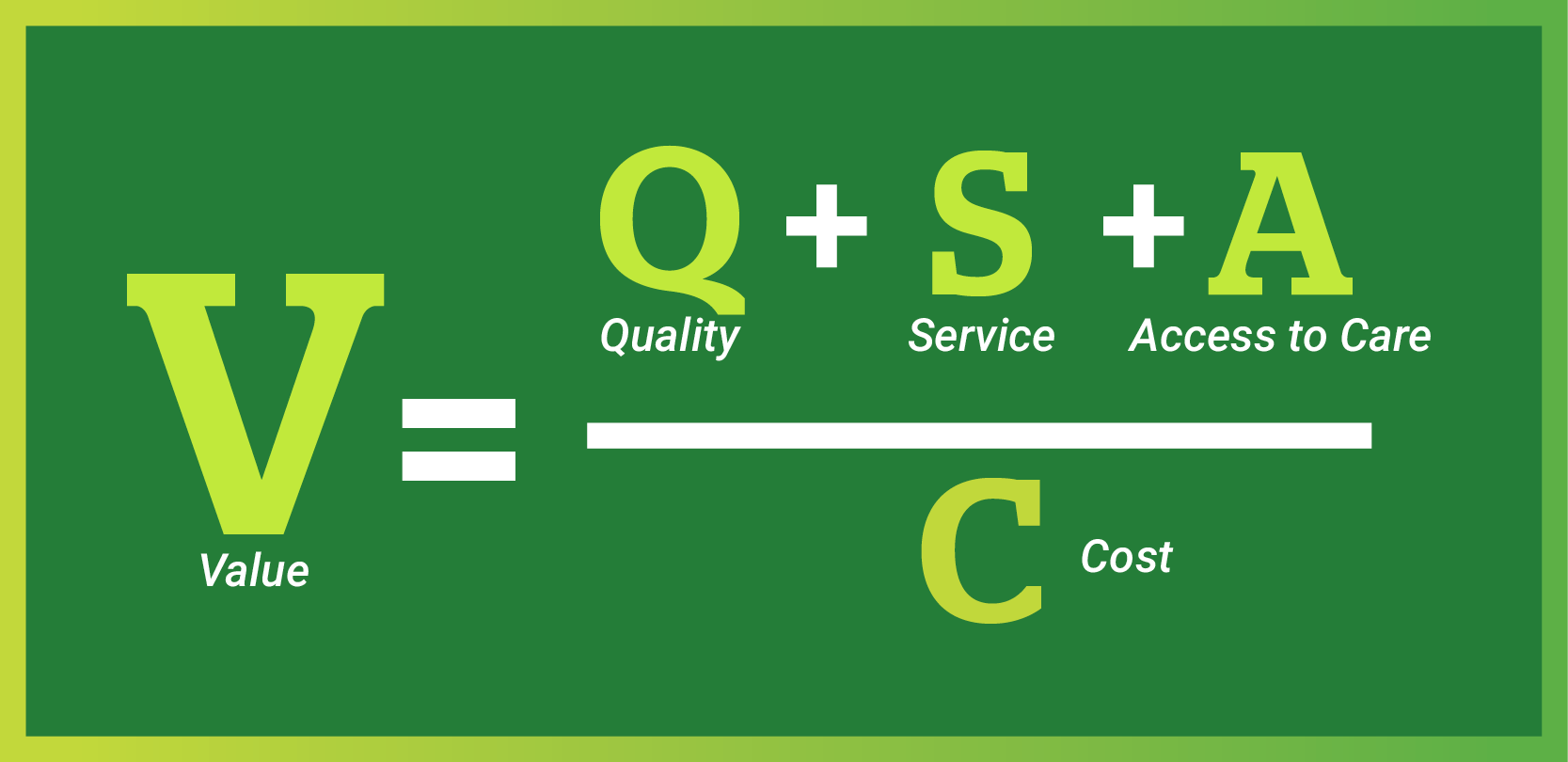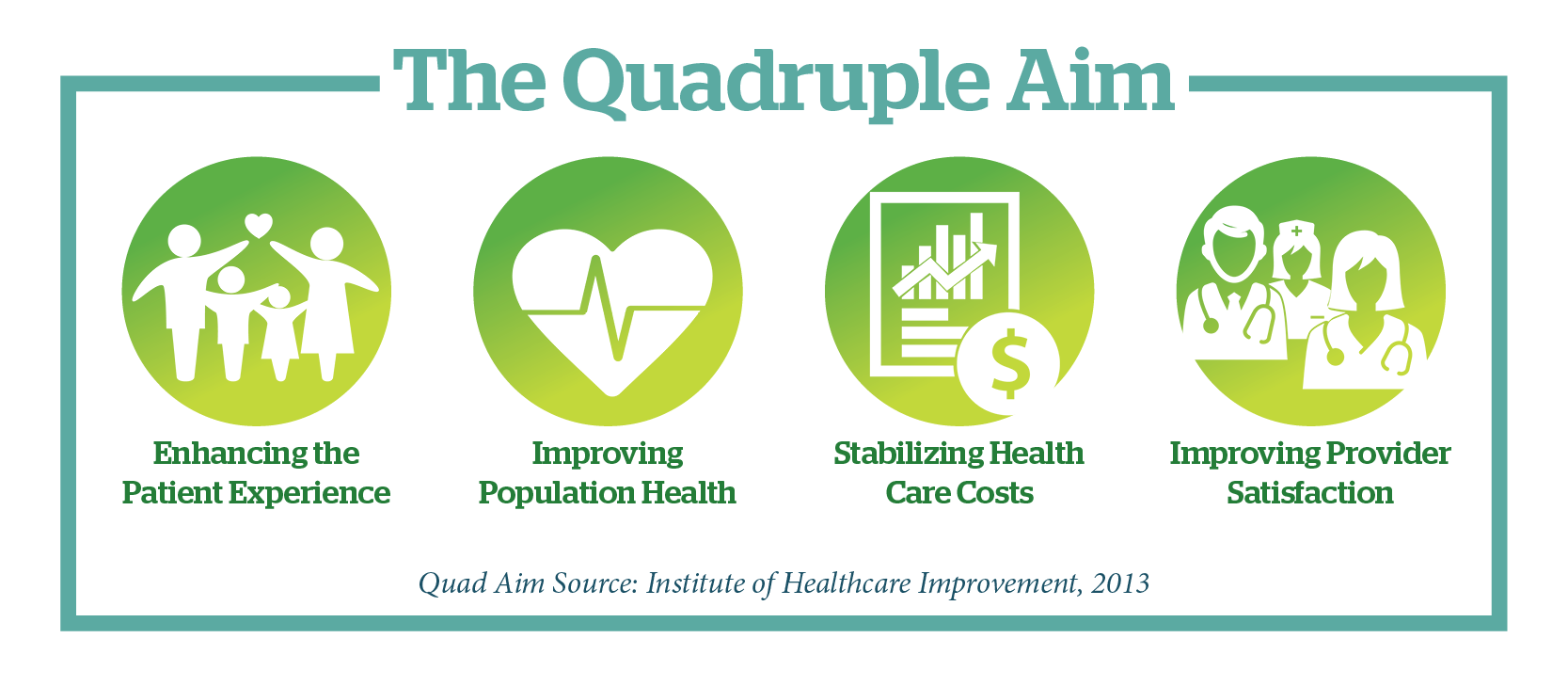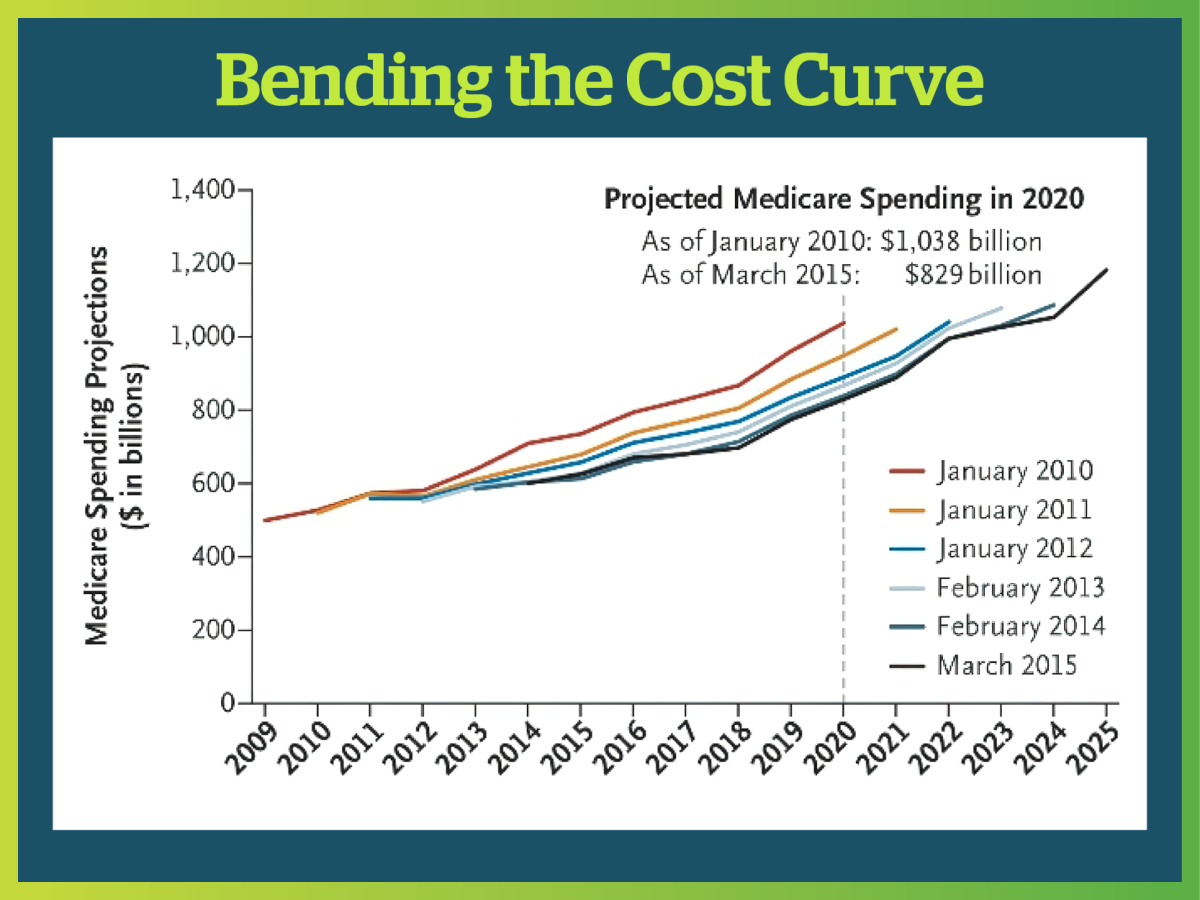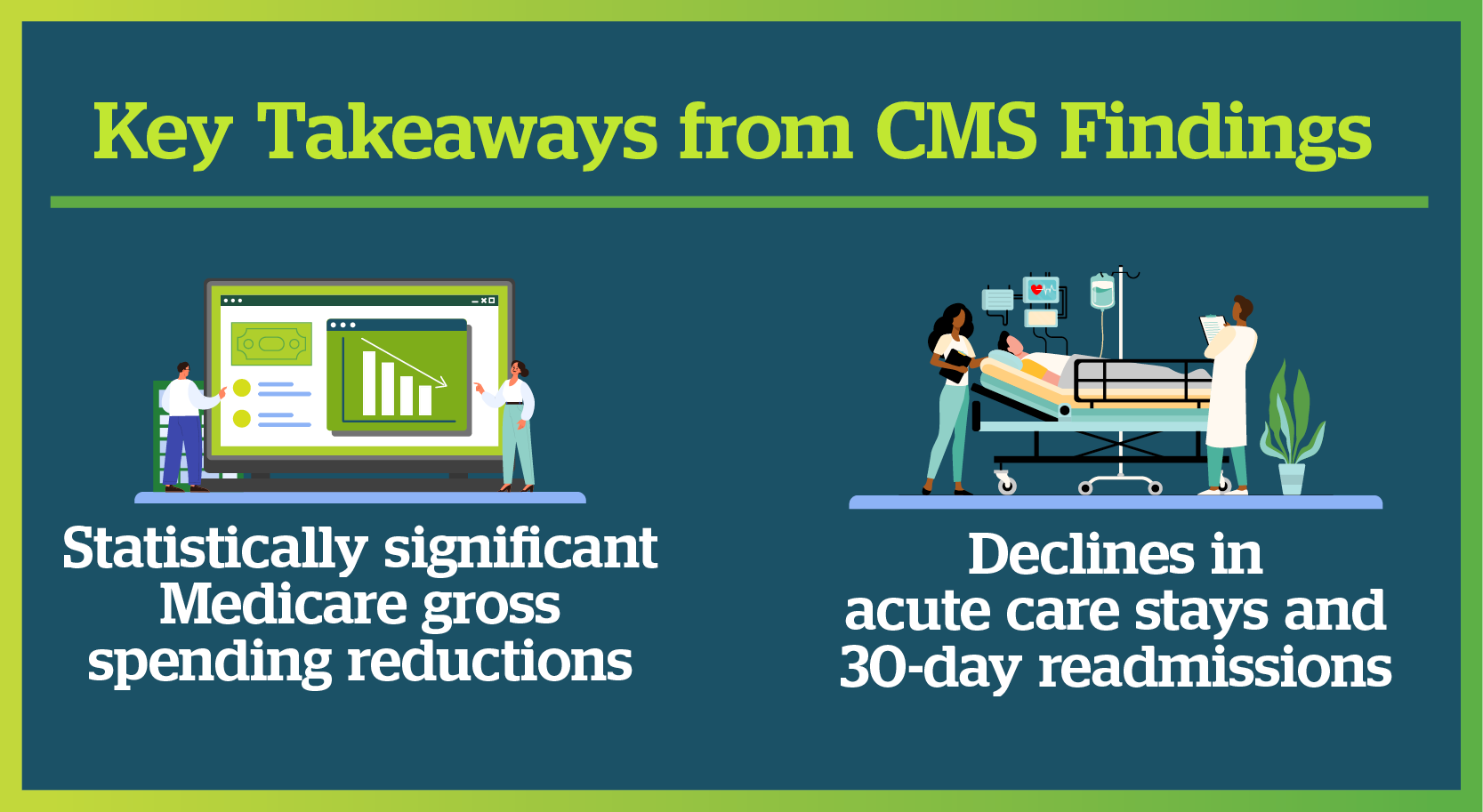Dr. Alicia Jacobs and Dr. Carrie Wulfman—OneCare physician liaison and OneCare chief medical officer respectively—are primary care doctors working together to advocate for continuous quality improvement and to advance value-based health care models. Together, they developed this overview of value-based care to better understand the model that is the future of health care. The fee-for-service model is not sustainable and value-based care will allow providers to practice in the way they were trained: patient-centered and focused on the value to the patients instead of the volume of billable services.
Value-based care focuses on high quality care, how people experience health care, and health care results. It pays providers more when individuals’ health and the overall health of all the people in a community improves—what is referred to as “population health.” Below is a chart that compares traditional fee-for-service care with value-based care.
What Value Means to Patients
In a simple definition, value is the quality of service divided by its cost. In health care, the patient experience matters and must be part of calculating value. Studies exploring value from the patient’s perspective have shown that the experience of care – and the quality of communication – are very important.
| Fee-for-Service | Value-Based Care | |
|---|---|---|
| Care Model | Many appointments with independent specialists | Comprehensive, interdisciplinary, coordinated, preventive care through the Patient Centered Medical Home (PCMH) |
| Systems | Separate administrative systems are not integrated, resulting in redundant tests and procedures and high risk of harm (e.g. drug interactions, exposure to risk of procedures, expense) | Connects health care data to identify gaps in care and opportunities for best practices |
| Costs | Separate costs for every test, visit, and procedure | Costs decrease because patients access the right care at the right time, have streamlined care plans, fewer complications, and better preventive health |
| Provider Experience | Over-stretched primary care providers offer reactive health care with little opportunity for care coordination | Providers work together to coordinate care and provide proactive health care |
| Patient Experience | A patient in this system has potentially less favorable health outcomes, more expensive care, and a varied health care experience | A patient in this system ideally experiences improved outcomes, lower cost, and a better health care experience |

Chart source: HealthSearch Group
Value in Health Care and the Quadruple Aim
The quadruple aim looks at more than just the cost and quality of health care. The health of the entire population, a positive experience for patients, and improved provider satisfaction are on an equal footing with reducing the cost of care.

Chart source: HealthSearch Group
Proven Ways to Increase Value in Health Care
There are several proven ways to increase health care value, including patient-centered medical homes (PCMHs) and accountable care organizations (ACOs). These are the four ways research has shown to increase value in health care:
- Shared decision-making between providers and patients
- Continuous quality improvement, with health equity as the foundation (e.g. plan, do, study, act cycles)
- Increased care coordination and integration
- Payment reform, tying payment to patient outcomes
Value-Based Care in Vermont
Vermont has been moving to value-based care for several years. Here are some successes:
- The Blueprint for Health has helped nearly all primary care practices in Vermont become patient-centered medical homes.
- OneCare Vermont, as a statewide accountable care organization, has brought a membership of more than 5,000 providers together to improve quality and decrease cost.
- Vermont’s All-Payer Model is an agreement between the state and federal government that allows Medicare to join Medicaid and commercial insurers to pay for health care differently. The goal is to reward a payment system based on value, high-quality care, and good health outcomes at a lower cost.

Above: The Affordable Care Act (ACA) passed in 2010 and ACOs are bending the cost curve in United States health care spending. This graph (NEJM, 2015) shows how the ACA has bent the cost curve for healthcare dollars spent in the United States.
Vermont’s Early High Value Care Successes
An independent research institution assessed the first two years of Vermont’s All Payer Model and found promising results. A report by National Opinion Research Center (NORC) at the University of Chicago found that:
- The All-Payer Model (APM) achieved statistically significant Medicare gross spending reductions at both the ACO and state levels, as well as Medicare net spending reductions at the state level.
- There were statistically significant declines in acute care stays (at the ACO and state levels) and in 30-day readmissions at the state level.

In summary
Value-based care focuses on high-quality care, how people experience health care, and health care results. It pays providers more when people’s health and the health of a community improves. Learn more here about how value-based care compares to traditional fee-for-service care, and what it means for patient.
Watch the video below to get an overview of of fee-for-service vs value-based care models and an introduction to OneCare’s core capabilities.
Please feel free to print out or share our flyer about value-based care:
For more information:
Please contact Public Affairs at OneCare Vermont. public@onecarevt.org | 802-847-1346.
To stay up to date on OneCare, please visit our news blog and our social media channels on LinkedIn and Twitter. Visit our Media Center and find “fast facts” for accurate reporting, images and graphics for utilization in your coverage, and recent media hits and releases.
